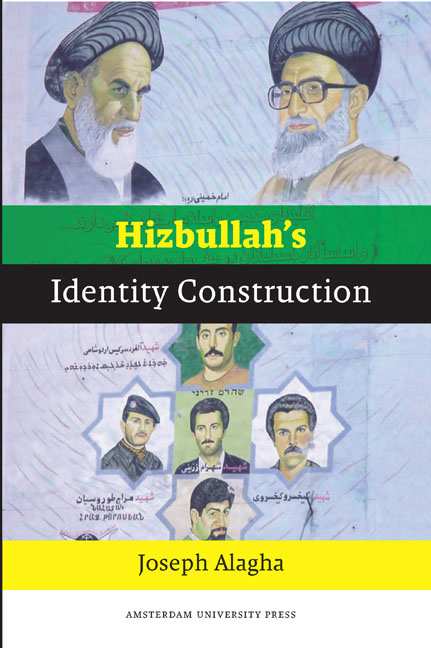Book contents
- Frontmatter
- Dedication
- Contents
- A Note on Transliteration
- Acknowledgements
- List of Abbreviations
- Summary
- Introduction and Analytical Framework
- 1 Tolerance and Discrimination: Ahl Al-Dhimma in the Islamic Order
- 2 Interpretation and Authority: Wilayat Al-Faqih
- 3 Political Violence: Terrorism and 9/11
- 4 Political Violence: Suicide Operations
- 5 From Cooptation to Contestation to Political Power
- 6 The Doha 2008 Accord and its Aftermath
- 7 The Eighth Conclave: A New Manifesto (November 2009)
- 8 Epilogue: Future Prospects – Disarmament and the Peace Process
- Afterword
- Glossary
- Additional Reading
- Notes
- Selected Bibliography
- Index
- Praise for Hizbullah's Identity Construction (1978-2010)
3 - Political Violence: Terrorism and 9/11
Published online by Cambridge University Press: 19 January 2021
- Frontmatter
- Dedication
- Contents
- A Note on Transliteration
- Acknowledgements
- List of Abbreviations
- Summary
- Introduction and Analytical Framework
- 1 Tolerance and Discrimination: Ahl Al-Dhimma in the Islamic Order
- 2 Interpretation and Authority: Wilayat Al-Faqih
- 3 Political Violence: Terrorism and 9/11
- 4 Political Violence: Suicide Operations
- 5 From Cooptation to Contestation to Political Power
- 6 The Doha 2008 Accord and its Aftermath
- 7 The Eighth Conclave: A New Manifesto (November 2009)
- 8 Epilogue: Future Prospects – Disarmament and the Peace Process
- Afterword
- Glossary
- Additional Reading
- Notes
- Selected Bibliography
- Index
- Praise for Hizbullah's Identity Construction (1978-2010)
Summary
ABSTRACT
Highlighting the long lineage between Islamic and national resistance, this chapter examines the interrelation between the process of Hizbullah's domestic integration and its regional militancy. It focuses on Hizbullah's discourse on terrorism, particularly after 9/11. The next chapter attempts to analyze Hizbullah's political and religious dimensions of ‘jihad’ and suicide bombing (‘martyrdom’) for the different levels of action (domestic and regional) and also discusses the party's view of martyrdom and jihad in relation to the terrorism charge.
INTRODUCTION
The first meeting, after 9/11, of the Organization of Islamic Conference (OIC), a 57 consortium of Islamic countries currently comprising around 1.6 billion Muslims, was held on 11-18 October 2003 in Putrajaya, Malaysia. In addition to addressing issues such as the Palestinian Intifada, and the situations in Iraq and Afghanistan, what topped the agenda was the endeavor to “absolve Islam from terrorism”. In its final declaration, the OIC condemned as “criminal terrorist bombings” the attacks that targeted the UN headquarters and the Jordanian and Turkish embassies in Baghdad. Also, the OIC “called for the signing of a convention to ‘distinguish between terrorism and the legitimate struggle for the right to self-determination of people living under occupation or foreign domination’ [resistance]”. In a similar vein, Shafiq Masri, a Lebanese international law authority, earlier maintained that the international community failed to reach a consensus on a unified definition of terrorism. He added that international law distinguishes between terrorism and legitimate resistance. The latter is considered a legitimate exception to the exercise of violence for political aims. From this perspective, national resistance is legitimized in international law in the following two cases: 1) self-determination, and 2) resistance to occupation. In a similar vein, on 25 August 2003, the Arab League endorsed a proposal that distinguishes between resistance and terrorism, and adopted it as a resolution. As such, the “Arab Agreement of Combating Terrorism” was amended “in order to distinguish between resisting occupation (which is considered a legitimate right and a national-patriotic duty) and terrorist activities”.
I suggest the Arabs and Muslims, till now, did not critically think about or analytically reflect upon the issue of terrorism.
- Type
- Chapter
- Information
- Hizbullah's Identity Construction , pp. 61 - 86Publisher: Amsterdam University PressPrint publication year: 2012

